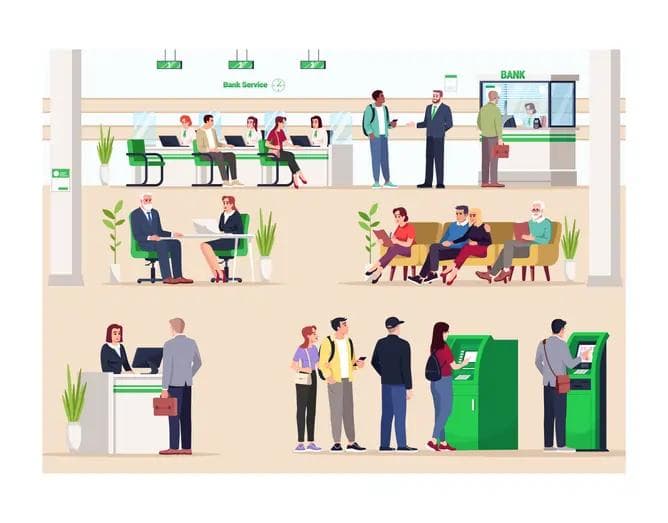Exit from central bank stimulus gathers pace as BoE hikes again
Exit from central bank stimulus gathers pace as BoE hikes again
Published by maria gbaf
Posted on February 7, 2022

Published by maria gbaf
Posted on February 7, 2022

LONDON (Reuters) -Major central banks are clearly moving into inflation-fighting mode, with the Bank of England on Thursday hiking interest rates for the second time in as many months.
Others are also starting to lift ultra-low borrowing costs, and even the most dovish are beginning to unwind the stimulus unleashed to shield economies from the COVID-19 pandemic.
Here’s a look at where policymakers stand on the path out of pandemic-era stimulus, in order of how hawkish they appear.
1) NORWAY
Norway’s central bank cemented its position as the most aggressive rate-setter in the developed world, raising rates https://www.reuters.com/markets/europe/norway-hikes-interest-rates-with-more-come-2021-12-16 in December after starting its rates lift-off in September.
Its key rate stands at 0.5% and at its January meeting https://www.reuters.com/world/europe/norway-track-march-rate-hike-central-bank-says-2022-01-20, Norges Bank flagged a March rate hike. Nordea expects four rate hikes this year.
2) NEW ZEALAND
New Zealand hiked rates in November https://www.reuters.com/markets/rates-bonds/new-zealand-hikes-rates-second-straight-month-inflation-risks-grow-2021-11-24 for a second time to 0.75% and forecast they would reach 2.5% by 2023.
Annual consumer inflation hit a three-decade high https://www.reuters.com/markets/currencies/new-zealand-annual-inflation-surges-three-decade-high-2022-01-26 in the fourth quarter, cementing expectations policy will be tightened at the Feb. 23 central bank meeting.
3) BRITAIN
The BoE raised rates to 0.5% on Thursday and nearly half of its policymakers wanted a bigger increase https://www.reuters.com/business/bank-england-hikes-rates-clamour-contain-inflation-2022-02-03 to contain rampant price pressures, as the British central bank warned inflation will soon top 7%.
The move follows a rate hike in December, marking the first back-to-back increases in the Bank Rate since 2004 and reflecting urgency among policymakers to show they are on top of a growing cost-of-living crisis.
4) UNITED STATES
The Federal Reserve has signalled its intent to raise rates in March https://www.reuters.com/business/finance/inflation-fighting-fed-likely-flag-march-interest-rate-hike-2022-01-26 and reaffirmed plans to end its bond purchases that month in what U.S. central bank chief Jerome Powell pledged will be a sustained battle to tame inflation.
Rate-hike jitters have unnerved Wall Street, while the U.S. Treasury curve has flattened https://www.reuters.com/business/finance/us-yield-curve-has-been-flattening-why-you-should-care-2022-02-03 in a sign that policy tightening may hurt the economy.
Deutsche Bank expects the Fed to raise rates https://www.reuters.com/business/finance/nomura-forecasts-50-bp-fed-hike-march-2022-01-27 at every meeting from March to June and then revert to a quarterly tightening cycle from September, amounting to five hikes this year.
5) CANADA
The Bank of Canada last week surprised some by opting not to raise the 0.25% interest rate, but Governor Tiff Macklem said the bank was on “a rising path”. https://www.reuters.com/business/finance/hike-or-not-its-toss-up-ahead-bank-canada-rate-decision-2022-01-26
He said on Wednesday there was uncertainty about how quickly inflation would come down https://www.reuters.com/business/bank-canada-head-says-unclear-how-quickly-inflation-will-drop-2022-02-02, but reiterated rates needed to rise. Canada’s inflation rate is at 4.8%, more than double the central bank‘s 2% target and well above its 1-3% control range.
Markets price in a hike to 0.50% in March 2, and five increases in total this year.
6) AUSTRALIA
The Reserve Bank of Australia this week ended its bond-buying scheme as expected, but surprised markets by pushing back against expectations for a rate rise as early as May.
Governor Philip Lowe argued for patience https://www.reuters.com/markets/rates-bonds/australias-central-bank-says-too-early-rate-rise-will-be-watching-over-year-2022-02-02 in raising rates so the economy could get more people into jobs, and said the inflation outlook was uncertain and it was plausible a rate hike might still be a year away.
So even as the RBA for the first time opened the door to a possible rate rise in 2022, bond yields fell – a sign perhaps that investors got carried away with the prospect of tighter policy from a still dovish bank.
7) EURO ZONE
The European Central Bank is moving slower than most of its peers, but is definitely sounding more hawkish.
ECB chief Christine Lagarde on Thursday acknowledged that inflation was running hotter than expected https://www.reuters.com/business/ecb-seen-hold-may-acknowledge-inflation-risks-2022-02-02 with risks tilted to the upside. Speaking at a post-meeting news conference, she said policymakers would not rush into new moves, but chose not to repeat her past comment that a hike this year was unlikely.
Markets rushed to bring forward rate hike bets and price more than 40 bps worth of tightening by the end of the year.
8) SWEDEN
Sweden has ended pandemic-era lending facilities but has pencilled in a rate hike only for late 2024.
Headline inflation in December was 4.1% versus the 2% target. The December surge was due mainly to electricity prices and should ease, says central bank Governor Stefan Ingves.
9) JAPAN
The Bank of Japan recently raised its inflation forecasts, but is in no rush to change its ultra-loose policy — a message repeated https://www.reuters.com/world/asia-pacific/boj-deputy-governor-wakatabe-says-premature-tighten-monetary-policy-now-2022-02-03 by deputy governor Masazumi Wakatabe on Thursday.
The BOJ has taken tentative steps https://www.reuters.com/markets/asia/boj-may-scale-back-emergency-funding-pandemic-strains-ease-2021-12-16 to unwind stimulus, pledging to slow purchases of corporate bonds and commercial paper to pre-pandemic levels from April.
10) SWITZERLAND
The Swiss National Bank remains at the dovish end of the spectrum, despite higher inflation, and believes its loose stance is appropriate https://www.reuters.com/markets/europe/swiss-national-bank-keeps-expansive-policy-despite-more-expensive-franc-2021-12-16. Of late though, it has stepped back into the currency markets to stem the franc’s rise by mopping up euros.
And faced with a property boom, it told lenders https://www.reuters.com/article/swiss-banks-property/swiss-banks-criticise-steps-to-cool-runaway-property-market-idUSL8N2U756U last week to hold additional capital amounting to 2.5% of risk-weighted positions that are backed by residential real estate.
(Reporting by Dhara Ranasinghe, Sujata Rao, Tommy Wilkes and Saikat Chatterjee; Editing by Susan Fenton)
LONDON (Reuters) -Major central banks are clearly moving into inflation-fighting mode, with the Bank of England on Thursday hiking interest rates for the second time in as many months.
Others are also starting to lift ultra-low borrowing costs, and even the most dovish are beginning to unwind the stimulus unleashed to shield economies from the COVID-19 pandemic.
Here’s a look at where policymakers stand on the path out of pandemic-era stimulus, in order of how hawkish they appear.
1) NORWAY
Norway’s central bank cemented its position as the most aggressive rate-setter in the developed world, raising rates https://www.reuters.com/markets/europe/norway-hikes-interest-rates-with-more-come-2021-12-16 in December after starting its rates lift-off in September.
Its key rate stands at 0.5% and at its January meeting https://www.reuters.com/world/europe/norway-track-march-rate-hike-central-bank-says-2022-01-20, Norges Bank flagged a March rate hike. Nordea expects four rate hikes this year.
2) NEW ZEALAND
New Zealand hiked rates in November https://www.reuters.com/markets/rates-bonds/new-zealand-hikes-rates-second-straight-month-inflation-risks-grow-2021-11-24 for a second time to 0.75% and forecast they would reach 2.5% by 2023.
Annual consumer inflation hit a three-decade high https://www.reuters.com/markets/currencies/new-zealand-annual-inflation-surges-three-decade-high-2022-01-26 in the fourth quarter, cementing expectations policy will be tightened at the Feb. 23 central bank meeting.
3) BRITAIN
The BoE raised rates to 0.5% on Thursday and nearly half of its policymakers wanted a bigger increase https://www.reuters.com/business/bank-england-hikes-rates-clamour-contain-inflation-2022-02-03 to contain rampant price pressures, as the British central bank warned inflation will soon top 7%.
The move follows a rate hike in December, marking the first back-to-back increases in the Bank Rate since 2004 and reflecting urgency among policymakers to show they are on top of a growing cost-of-living crisis.
4) UNITED STATES
The Federal Reserve has signalled its intent to raise rates in March https://www.reuters.com/business/finance/inflation-fighting-fed-likely-flag-march-interest-rate-hike-2022-01-26 and reaffirmed plans to end its bond purchases that month in what U.S. central bank chief Jerome Powell pledged will be a sustained battle to tame inflation.
Rate-hike jitters have unnerved Wall Street, while the U.S. Treasury curve has flattened https://www.reuters.com/business/finance/us-yield-curve-has-been-flattening-why-you-should-care-2022-02-03 in a sign that policy tightening may hurt the economy.
Deutsche Bank expects the Fed to raise rates https://www.reuters.com/business/finance/nomura-forecasts-50-bp-fed-hike-march-2022-01-27 at every meeting from March to June and then revert to a quarterly tightening cycle from September, amounting to five hikes this year.
5) CANADA
The Bank of Canada last week surprised some by opting not to raise the 0.25% interest rate, but Governor Tiff Macklem said the bank was on “a rising path”. https://www.reuters.com/business/finance/hike-or-not-its-toss-up-ahead-bank-canada-rate-decision-2022-01-26
He said on Wednesday there was uncertainty about how quickly inflation would come down https://www.reuters.com/business/bank-canada-head-says-unclear-how-quickly-inflation-will-drop-2022-02-02, but reiterated rates needed to rise. Canada’s inflation rate is at 4.8%, more than double the central bank‘s 2% target and well above its 1-3% control range.
Markets price in a hike to 0.50% in March 2, and five increases in total this year.
6) AUSTRALIA
The Reserve Bank of Australia this week ended its bond-buying scheme as expected, but surprised markets by pushing back against expectations for a rate rise as early as May.
Governor Philip Lowe argued for patience https://www.reuters.com/markets/rates-bonds/australias-central-bank-says-too-early-rate-rise-will-be-watching-over-year-2022-02-02 in raising rates so the economy could get more people into jobs, and said the inflation outlook was uncertain and it was plausible a rate hike might still be a year away.
So even as the RBA for the first time opened the door to a possible rate rise in 2022, bond yields fell – a sign perhaps that investors got carried away with the prospect of tighter policy from a still dovish bank.
7) EURO ZONE
The European Central Bank is moving slower than most of its peers, but is definitely sounding more hawkish.
ECB chief Christine Lagarde on Thursday acknowledged that inflation was running hotter than expected https://www.reuters.com/business/ecb-seen-hold-may-acknowledge-inflation-risks-2022-02-02 with risks tilted to the upside. Speaking at a post-meeting news conference, she said policymakers would not rush into new moves, but chose not to repeat her past comment that a hike this year was unlikely.
Markets rushed to bring forward rate hike bets and price more than 40 bps worth of tightening by the end of the year.
8) SWEDEN
Sweden has ended pandemic-era lending facilities but has pencilled in a rate hike only for late 2024.
Headline inflation in December was 4.1% versus the 2% target. The December surge was due mainly to electricity prices and should ease, says central bank Governor Stefan Ingves.
9) JAPAN
The Bank of Japan recently raised its inflation forecasts, but is in no rush to change its ultra-loose policy — a message repeated https://www.reuters.com/world/asia-pacific/boj-deputy-governor-wakatabe-says-premature-tighten-monetary-policy-now-2022-02-03 by deputy governor Masazumi Wakatabe on Thursday.
The BOJ has taken tentative steps https://www.reuters.com/markets/asia/boj-may-scale-back-emergency-funding-pandemic-strains-ease-2021-12-16 to unwind stimulus, pledging to slow purchases of corporate bonds and commercial paper to pre-pandemic levels from April.
10) SWITZERLAND
The Swiss National Bank remains at the dovish end of the spectrum, despite higher inflation, and believes its loose stance is appropriate https://www.reuters.com/markets/europe/swiss-national-bank-keeps-expansive-policy-despite-more-expensive-franc-2021-12-16. Of late though, it has stepped back into the currency markets to stem the franc’s rise by mopping up euros.
And faced with a property boom, it told lenders https://www.reuters.com/article/swiss-banks-property/swiss-banks-criticise-steps-to-cool-runaway-property-market-idUSL8N2U756U last week to hold additional capital amounting to 2.5% of risk-weighted positions that are backed by residential real estate.
(Reporting by Dhara Ranasinghe, Sujata Rao, Tommy Wilkes and Saikat Chatterjee; Editing by Susan Fenton)
Explore more articles in the Banking category











